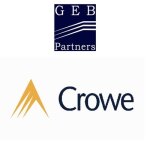With judgment No. 26432, published on October 10 2024, the Italian Supreme Court ruled on a case involving a transfer pricing assessment in which the Italian tax authority:
Challenged the taxpayer’s selection of the transfer pricing method (comparable uncontrolled price, or CUP); and
Opted for the transactional net margin method (TNMM).
With regard to the selection of transfer pricing methods, it should be noted that until the 2010 update, the OECD Transfer Pricing Guidelines for Multinational Enterprises and Tax Administrations (the OECD Guidelines) established a so-called hierarchy of methods, favouring the application of traditional methods (CUP, resale minus, and cost plus). Only when the application of traditional methods was not feasible would the use of transactional profit methods (TNMM or profit split) be considered.
Since 2010, the OECD Guidelines have moved away from a hierarchy of methods, adopting the ‘best method’ rule, which requires selecting the method that best suits the circumstances of the case. However, if a traditional method can be applied with the same degree of reliability as a transactional profit method, preference should be given to the traditional method. Similarly, if the CUP method can be applied with the same degree of reliability as any other method, preference should be given to the CUP method.
Italian regulations and practice regarding transfer pricing methodology were outlined in Ministry of Finance Circular No. 32 of 1980, which, in line with the OECD Guidelines applicable at that time, established a hierarchy of methods. It was only in 2018, with the publication of the Ministerial Decree of May 14 2018 (providing the implementation guidelines for transfer pricing rules), that Italian regulations aligned with the post-2010 OECD Guidelines.
Evolution of the case and establishment of a legal principle
In relation to the case addressed in the judgment under review, as previously mentioned, the Italian tax authority deemed the CUP method inapplicable, opting instead for the TNMM method.
The case involved an Italian manufacturing company that produces packaging machines domestically, while foreign related entities are involved in the distribution and sales activities in various countries.
The first- and second-instance judges upheld the position of the tax authority, and, consequently, the taxpayer appealed to the Supreme Court, challenging the fact that the tax authority had prioritised the TNMM over the CUP method, inconsistently with the OECD Guidelines and Italian rules applicable at that time (tax year 2008).
The Supreme Court rejected the taxpayer’s appeal, explaining that the OECD Guidelines, on which the appellant relied, are not capable of establishing a hierarchical order among the methods – a function that only legislation could fulfil, if intended.
Thus, a legal principle has been established, asserting that “OECD recommendations do not fall within the hierarchy of legal sources but provide operational aids and methodologies (technical norms) for the specific implementation of legislative provisions”, such as those concerning the arm’s-length principle referenced in Article 110, paragraph 7, of the Italian Income Tax Code.
With this clarification, it is up to the interpreter to select the most suitable method from those proposed, one that best fits the specific case.
The courts must assess whether the rationale behind this choice is coherent and not logically flawed (and the Supreme Court can review such flaws).
In the case under review, the use of the TNMM (aiming at evaluating the margin achieved by the less complex party in the transactions) by the Italian tax authority was deemed appropriate and more suitable than the CUP method in providing a reliable indication of the arm’s-length value, considering the nature of the transactions (sale of goods), the economic conditions, and the functional roles of the company involved in such transactions.
In particular, the Supreme Court considered the TNMM more appropriate given the group's organisational structure and the low-risk nature of its intragroup transactions. Based on such consideration, testing the net profit margin achieved in the intercompany transaction was considered a better method (in comparison with the price) to evaluate the compliance of the transfer pricing policies with the arm’s-length principle.
Implications of the Italian Supreme Court’s decision
This ruling is particularly significant as it highlights, on one hand, the supporting role of the OECD Guidelines in local transfer pricing regulations, and, on the other, provides further insights into the selection of the so-called best method. The CUP method has often been regarded as the most direct approach for testing transfer pricing policies because it directly reflects the price applied in intragroup transactions and in comparable transactions with independent parties.
The selection of the best method must consider the strengths and weaknesses of each approach, taking into account the nature of the transaction, the availability of reliable data, the functional roles of the entities involved, and the feasibility of performing comparability adjustments to enhance the level of comparability between the tested intragroup transaction and comparable independent transactions.













